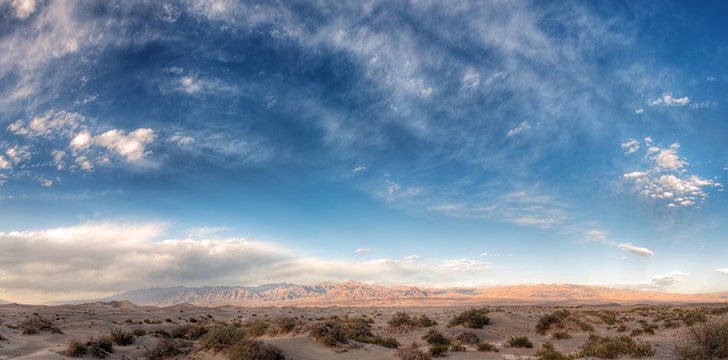This is a question we all ask when we’re kids: Why is the sky blue?
Many think that it’s reflecting the color of the ocean, but that’s a huge myth!
It’s not a short answer, but it is a simple one that’s easy to understand.
So let’s find out, once and for all, why the sky is blue!
What color of light does the sun put out?

The color that comes from the sun is a white light that is a mixture of all the colors of the rainbow.
When the sunlight gets to the atmosphere of Earth, it is scattered in every direction by the gases and particles in the air.
It was Isaac Newton who discovered that a prism could be used to separate the different colors and form a spectrum.
He further proved that it wasn’t the prism coloring the light by refracting the light back together.
Each shade of color consists of different wavelengths.
Red has the longest waves, and violet has the shortest waves. Short wavelengths are scattered more strongly than long waves.
Then why don’t we see a violet sky?

This is because of our eyes! We distinguish colors by using cones in our retinas, which are photo receptor cells.
Each retina contains 5 million cones of 3 different types which specialize in different colors.
Specifically, the 3 different types of colors are red, blue, and green which are the colors our eyes respond the strongest to.
Even though violet is the shortest, it is absorbed by the atmosphere making there less violet in the light.
On top of that, our eyes are less sensitive to violet because of our color receptors.
That leaves us to see a blue sky, since blue is the second shortest wavelength!
So on a clear day with no clouds, we will see a blue sky because the molecules in the air scatter blue light more so.
Red light during the day doesn’t quite scatter in the daytime.
Why are sunset’s different colors?

When the sun goes down, all of this changes. Sunsets are typically vibrant colors of reds, oranges, pinks, and purples.
When the sun is going down, the blue light is scattering where the sun is moving, and it’s blue out of our line of sight.
If the air is clear, the sunset will look yellow since the sunlight has passed a long distance through the air.
If you’re in a more polluted area, the sunset will be redder since the light is passing through a thicker layer of atmosphere.
This results in the blue and green light being scattered along the way, while the red wavelengths pass through.
Meanwhile, sunsets over the ocean may be orange due to the salt particles in the air.
Obviously, you should never stare directly at the sun else you’ll likely go blind. But if you did, you would see all of the wavelengths because light would be directly reaching your eyes.
Looking away from the sun makes it seem white in our peripherals because again, we see light from shorter wavelengths.
So there’s your science lesson for the day! It’s a simple question asked by many, but the answer is really only known by a few.
Now the next time this question comes up, perhaps asked by a child or surfacing as a question at your local pub quiz, you’ll be prepared with a knowledgeable answer!
Many people believe the sky is blue because it reflects the color of the ocean, but no, that’s a huge myth!










